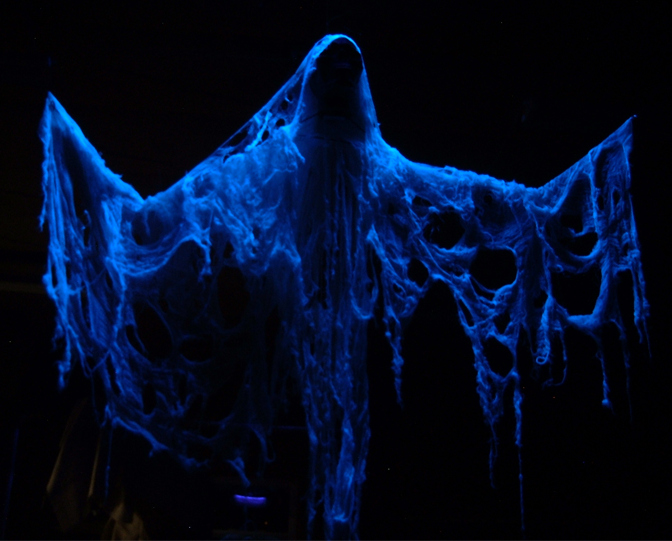Most of us have a nagging sense that there is something out there just beyond our comprehension, a shadow disturbing the moonlight, a flicker just beyond gnarled trees, a whisper among the dead leaves. Normally we tune out these intimations – as the Handbook for the Recently Deceased in Beetlejuice reads, “The living usually won’t see the dead.” But on Halloween the veil between the living and the dead draws aside and ghosts are free to walk among us.
In the ancient Celtic tradition of Samhain, which eventually evolved into Halloween, the old year died on October 31 and the new began on November 1, but after sundown on the 31st, there was a pause where ghosts could return to their former homes, seeking warmth and cheer. The words “guest” and “ghost” are rooted in the Germanic word “geist,” which originally meant the spirit of a dead relative invited to visit on a solemn occasion such as Halloween.
Appeasing friendly ghosts and evading evil spirits were the most pressing matters of the day. Huge bonfires were lit and tended to guide and welcome friendly spirits and frighten off evil spirits, and generous portions of newly harvested foods were set out to comfort and honor the returned. To anger the spirits was foolish and dangerous as even the ghosts of friends and family could visit harm upon the living whereas contented spirits might give warnings or advice to the living. Ghosts were a dead serious matter, especially on Halloween and people were hyper-vigilant as to indications of their presence.
In Brittany, France, where pagan Celtic traditions continued into the Middle Ages, stone lighthouses, called Lanterns of the Dead, gave protection against malicious ghosts on Halloween. Until recent times, a town crier wandered the at sundown on Halloween warning the citizens that ghosts were coming. After bedtime, singers took to the streets, intoning, “You are comfortably lying in your bed, But with the poor dead it is otherwise: You are stretched softly in your bed, While the poor souls are wandering abroad.”
Children born on Halloween were thought to be able to routinely see and even interact with ghosts. As we discussed in “Halloween and the Lost Art of Divination,” people went to great lengths to enlist the spirits’ aid in divining the future.
No wonder, then, that ghosts, be they apparitions, animate skeletons, or in classic white shrouds, are such a potent symbol of Halloween. Ironically, it is religious Catholics and Episcopalians — along with modern Wiccans, Druids, and assorted pagans — who most closely celebrate the original spirit of Samhain/Halloween today in that they honor the hallowed dead on All Saints Day, aka All Hallows, on November 1. The Mexican Day of the Dead is similarly celebrated on November 1 and 2.
More Halloween Reading:
Halloween Symbols – Orange and Black
Halloween Symbols – The Black Cat
Halloween Symbols – Pumpkins and Jack-O-Lanterns
Halloween Symbols – Release the Bats
Halloween and the Lost Art of Divination
Why Has Hocus Pocus Become THE Halloween Family Favorite?
Halloween Hangover
Halloween Reading













Share This
Share this post with your friends!